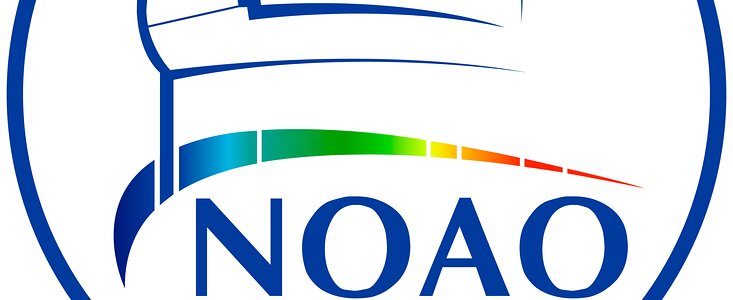Gemini North Telescope Gives Astronomers a Clearer Vision of the Universe
25 June 1999
At a ceremony in Hawaii today, astronomers revealed some of the sharpest infrared images ever obtained by a ground-based telescope. These first high-resolution images from the new Gemini North Observatory show the remarkable power of the telescope's technologies, which minimize distortions that have blurred astronomical images since Galileo first pointed a telescope skyward almost 400 years ago. The clarity of these images is equivalent to resolving the separation between a set of automobile headlights at a distance of 2,000 miles!
The images were unveiled at the dedication of Gemini North, one of the largest telescopes in the world, near the summit of Mauna Kea on the Big Island of Hawaii. Built by an international partnership of seven nations, it is the first of two 8-meter telescopes that together can explore the entire northern and southern skies in optical and infrared light. Its twin, Gemini South, is under construction on Cerro Pachón in northern Chile. They are expected to obtain unprecedented optical and infrared views of stars, galaxies and the most distant outposts of the known universe.
"The inauguration of this telescope marks a new era in our exploration of the heavens, and the United States is proud to be one of the leaders of that era," said Rita Colwell, National Science Foundation (NSF) director. "The Gemini project stands out as a model of collaboration, enabling scientists and engineers from seven nations together to achieve images of the universe that were unimaginable even a few years ago."
The United States, United Kingdom, Canada, Chile, Australia, Brazil and Argentina are participating in the $192-million project. NSF will fund almost half the amount on behalf of the United States. NSF also serves as the executive agency for the international partnership.
The Gemini telescopes incorporate new technologies that allow large, relatively thin mirrors to collect and focus starlight with extraordinary precision. At infrared wavelengths, these technologies make it possible at times to achieve even more clarity than is possible with the Hubble Space Telescope. The observations will help astronomers make major advances in answering questions about how stars and planets form, the structure of the Milky Way and other galaxies, and the age and evolution of the universe.
"Gemini's innovative optics and thermal controls give these telescopes a significant edge in studying the universe using infrared light," said Matt Mountain, director of the international project. "The results we've seen today give us confidence that the risks we've taken will pay off for ground-based astronomers by providing extremely sharp images. This will allow us to look back in time to the most distant galaxies and even detect the trembling of individual molecules around newly forming stellar systems."
Gemini North is expected to start scientific operations by mid-2000, and Gemini South about a year later. They are the largest, most advanced telescopes available to U.S. astronomical researchers and students regardless of institutional affiliation. U.S. astronomers will receive almost half of the observing time on Gemini. Images and data from the Gemini telescopes will be available to astronomers around the world through sophisticated computer technology and the Next Generation Internet.
Notes
The United States Gemini Program (USGP) represents U.S. scientific, technical, and instrumentation interests in the international community of the Gemini project. The USGP is part of the SCience OPErations (SCOPE) division of the National Optical Astronomy Observatories (NOAO). NOAO is operated by the Association of Universities for Research in Astronomy (AURA), Inc. under cooperative agreement with the National Science Foundation.
More information
The Gemini project is managed by the Association of Universities for Research in Astronomy, Inc. (AURA), a non-profit consortium of 29 U.S. institutions and five international affiliates. For U.S. astronomers, the gateway to Gemini is the U.S. Gemini Program, a division of the National Optical Astronomy Observatories (NOAO). NOAO is operated by AURA under a cooperative agreement with the NSF.
Editors: High-resolution versions of the infrared images obtained by Gemini North and digital photographs of Gemini North and Gemini South will be available on the World Wide Web at 5 a.m. Hawaii time (11 a.m. EDT) on June 25. The images may be found at the following sites:
Broadcasters: B-roll of Gemini North's first images and aerial and close-up views of the telescope are available on Betacam SP. Contact: Dena Headlee, National Science Foundation A/V specialist, (703) 306-1070 or pager 1-888-937-5249, dheadlee@nsf.gov
Contacts
Elizabeth Alvarez
U.S. Gemini Program
Tel: (520) 318-8385
Email: ealvarez@noao.edu
Amber Jones
National Science Foundation
Tel: (703) 306-1070
Email: aljones@nsf.gov
Peter Michaud
Gemini Observatory
Tel: (808) 974-2510
Email: pmichaud@gemini.edu



